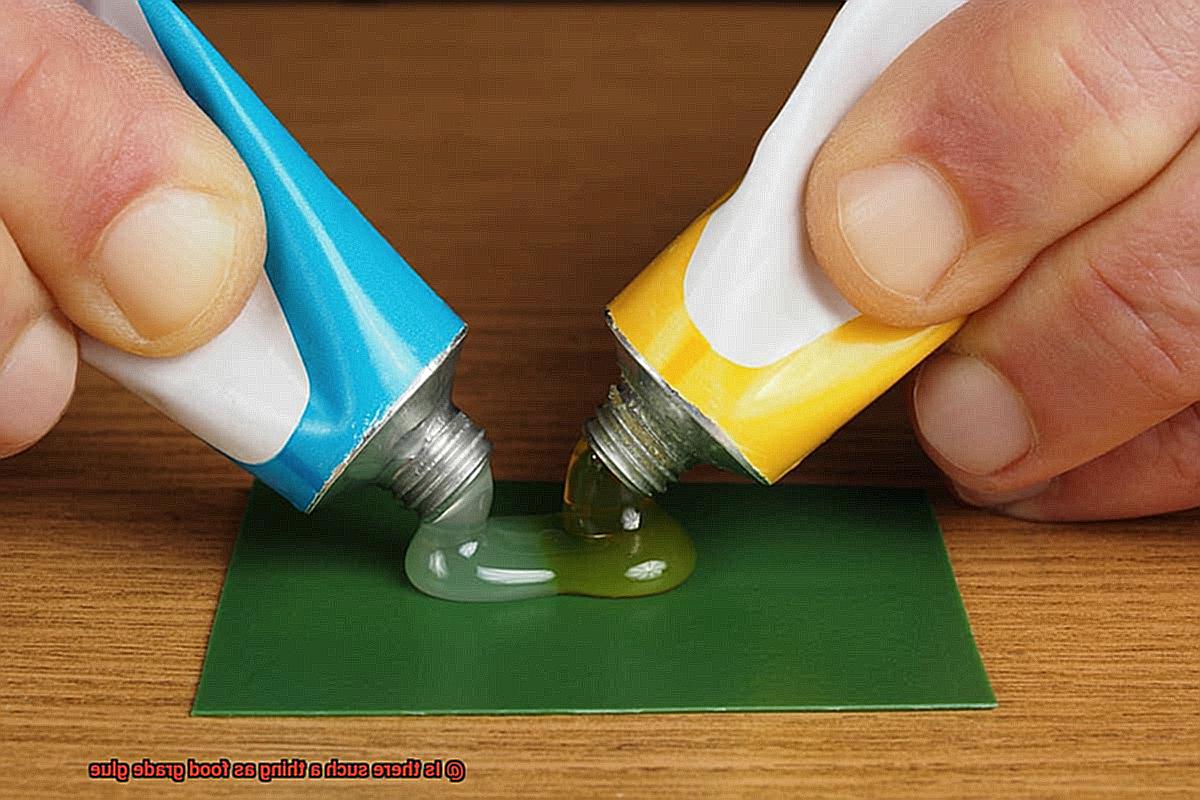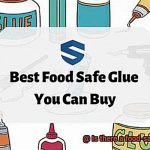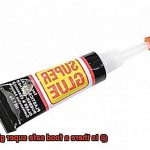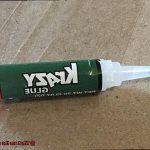Today, we’re going to tackle a question that might have popped into your head while you were browsing the grocery store or whipping up a delicious meal: is there such a thing as food grade glue? Yes, you heard it right.
We often associate glue with arts and crafts or fixing things around the house, but did you know that there’s actually a special kind of adhesive made specifically for food-related purposes? In this blog post, we’re going to explore the concept of food grade glue – what it is, why it exists, and how it plays a crucial role in different industries.
So if you’re curious about this fascinating world of food grade glue, let’s jump right in.
What is Food Grade Glue?
Contents
- 1 What is Food Grade Glue?
- 2 Regulations and Standards for Food Grade Glue
- 3 Types of Food Grade Glue
- 4 Benefits of Using Food Grade Glue
- 5 Factors to Consider When Choosing a Food Grade Glue
- 6 Certification and Testing of Food Grade Glues
- 7 Proper Application Techniques for Food Grade Glue
- 8 Organizations That Provide Guidelines and Standards for Food Grade Adhesives
- 9 Conclusion
When it comes to food packaging, safety and integrity are paramount. Enter food grade glue, a specially formulated adhesive that ensures your food stays secure and uncontaminated. But what exactly is food grade glue? Let’s dive into the world of food grade glue, exploring its purpose, characteristics, and significance in the food industry.
Food grade glue is an adhesive that meets stringent standards set by governing bodies like the FDA. Its primary role is to keep bonded or sealed food packaging intact without compromising the contents inside.
One hallmark of food grade glues is their ability to withstand direct contact with various food materials without causing any adverse reactions. Imagine opening a can of your favorite soup, only to find that the adhesive used in the lining has tainted the flavor. With food grade glue, this worry is eliminated.
To be labeled as food grade, an adhesive must meet specific criteria. It should be non-toxic, odorless, and tasteless. Additionally, it must resist moisture, grease, and other contaminants commonly found in food. Moreover, it should remain stable when exposed to temperature fluctuations and different food substances or processing methods.
Importantly, not all glues or adhesives are food grade. Regular household or industrial glues may contain substances unsuitable for direct contact with food. Therefore, choosing the right adhesive for food-related applications is crucial.
When selecting a food grade glue, it is recommended to look for products tested and certified by reputable organizations or independent laboratories. These certifications ensure that the adhesive complies with necessary safety regulations for food contact.

Regulations and Standards for Food Grade Glue
Food grade glue is a special adhesive used in the food industry to keep food packaging secure and intact. To ensure the safety of consumers, there are strict regulations and standards that manufacturers must adhere to when producing food grade glue.
In the United States, the Food and Drug Administration (FDA) is responsible for regulating food grade glue. The FDA has a list called the Generally Recognized as Safe (GRAS) list, which includes certain adhesives that are considered safe for use in food packaging. Manufacturers must ensure that their products comply with the FDA’s regulations and guidelines to be labeled as food grade glue.
Similarly, in the European Union, the European Food Safety Authority (EFSA) takes the lead in providing scientific opinions on the safety of substances used in food contact materials, including adhesives. Adhesive manufacturers must comply with the EU’s regulations on food contact materials and ensure their products are safe for use in food packaging.
Other countries such as Canada, Australia, and Japan also have their own regulations and standards for food grade glue. While these may vary slightly from country to country, they all focus on ensuring the safety of adhesive products used in the food industry.
In addition to governmental regulations, there are industry-specific standards and certifications for food grade glue. For example, the International Organization for Standardization (ISO) has developed ISO 22000, a standard that specifies requirements for a food safety management system. Adhesive manufacturers may seek ISO 22000 certification to demonstrate their commitment to producing safe products for the food industry.

When choosing a food grade glue, it is important to select products that comply with applicable regulations and standards. This helps ensure that the adhesive is safe for use in food packaging and does not pose any health risks to consumers. It is crucial to look for adhesives that are non-toxic, odorless, and resistant to moisture, heat, and chemicals. These properties are essential for maintaining the integrity of food packaging and preventing any contamination.
Types of Food Grade Glue
The answer lies in food grade glue: a special type of adhesive that is safe to use on surfaces that come into contact with food. Join us as we explore the different types of food grade glue and their exciting applications.
Super Glue
Super glue, also known as cyanoacrylate glue, is a popular choice in the food industry. It forms a strong bond quickly and can stick various materials together, like plastic, glass, and metal. Whether it’s sealing a small crack in a food container or attaching labels to packaging, super glue gets the job done. However, it’s important to note that it’s not suitable for use in high-temperature environments or with oily surfaces.
Epoxy Glue
When it comes to bonding food-grade metals like stainless steel, epoxy glue is your go-to option. This adhesive can withstand high temperatures and offers excellent bonding strength. It’s perfect for assembling food processing equipment or repairing utensils. Just make sure to look for epoxy glues that specifically state they are food safe.
Silicone Glue
Imagine sealing a container or fixing a kitchen appliance with a flexible and heat-resistant adhesive. That’s where silicone glue shines. It can handle temperature fluctuations and movement, making it ideal for kitchen repairs and sealing food containers. Remember to choose silicone glues labeled as food safe to ensure they don’t release harmful chemicals into the food.
Polyurethane Glue
Need a strong bond that can resist water and heat? Polyurethane glue has got you covered. It’s perfect for sealing joints or repairing equipment in the food industry. Whether it’s sealing conveyor belts or assembling sealing systems, polyurethane glue provides durability and reliability. But don’t forget to pick polyurethane glues explicitly labeled as food grade for that extra layer of safety.
Hot Melt Adhesive
When speed is of the essence, hot melt adhesives are here to save the day. These thermoplastic adhesives can be melted and quickly applied to surfaces, making them great for packaging applications like sealing cartons or attaching labels to containers. They offer fast bonding and ensure efficient production processes in the food industry.
Benefits of Using Food Grade Glue
Food grade glue is a crucial element in the food industry, playing a vital role in ensuring the safety, integrity, and attractiveness of food packaging. This special adhesive is formulated to be safe for use in food-related applications, making it the go-to choice for sealing bags and boxes, attaching labels and stickers, and assembling food containers.
The primary benefit of using food grade glue is its ability to ensure the safety of food products. Unlike regular glue, which may contain harmful substances, food grade glue is made from non-toxic materials that are approved for direct contact with food. Rigorous testing and adherence to health and safety regulations guarantee that this glue won’t contaminate your food with any nasty chemicals.
Versatility is another great advantage of food grade glue. It can be used on various packaging materials like paper, cardboard, plastic, and metal. This versatility allows the adhesive to meet the diverse needs of the food industry, ensuring that your packaging stays securely sealed and your products are protected from leaks or spoilage.
Furthermore, food grade glue offers excellent adhesion properties, keeping your packaging materials tightly sealed and preserving the freshness and quality of your food. It is also resistant to moisture and temperature variations, making it ideal for refrigerated or frozen foods that may encounter challenging conditions.
What sets food grade glue apart is its compliance with strict regulatory standards. Thorough testing ensures that it meets all health and safety regulations, giving consumers peace of mind knowing that their food packaging has been evaluated for its safety.
In addition to its functional benefits, food grade glue enhances the overall appearance of your food packaging. With its clean and professional finish, it makes your products more attractive to consumers, helping you make a good impression in a competitive market.
Lastly, using food grade glue is convenient. It comes in various forms such as liquid adhesives, hot melt glues, and pressure-sensitive tapes, allowing you to choose the most suitable adhesive for your specific needs and production processes.
Factors to Consider When Choosing a Food Grade Glue
When it comes to choosing a food grade glue, there are several factors that you should consider to ensure the safety and quality of your food products. Let’s take a closer look at these factors:
- Certification and Compliance: The first and most important factor to consider is certification and compliance. Look for glues that have been certified by relevant regulatory bodies, such as the FDA in the United States. These certifications ensure that the glue is safe for direct or indirect contact with food.
- Ingredients: Nobody wants harmful substances or allergens seeping into their food. Always check the label or product specifications to ensure that the glue is made from safe and non-toxic materials. Opt for glues that are made from food-grade raw materials such as vegetable-based adhesives or natural polymers.
- Temperature Resistance: Food processing environments can be extreme, with freezing or high heat conditions. Make sure the glue can withstand these temperature variations without compromising its adhesive properties or releasing any harmful substances into the food.
- Bond Strength: The strength of the bond created by the food grade glue is crucial for packaging and sealing applications. Look for glues that offer high tensile strength and excellent adhesion properties to prevent leaks or contamination.
- Odor and Taste: Nobody wants their food smelling or tasting like glue, right? Choose a glue that is odorless and tasteless to maintain the integrity of your food product.
- Compatibility: The glue should adhere well to various packaging materials such as paper, cardboard, plastic, or metal. It should also be compatible with different types of food without causing any adverse reactions.
- Application Method: Consider the application method that suits your needs. Choose a glue that can be applied easily using suitable methods such as spray, brush, or roller. The viscosity and drying time should be optimal for efficient application and bonding.
- Safety and Health Considerations: Always prioritize safety and health considerations. Look for glues that are non-toxic, non-corrosive, and provide clear instructions for safe handling and usage.
Certification and Testing of Food Grade Glues
In the food industry, safety is paramount. That’s why certification and testing processes for food grade glues are crucial. These processes guarantee that the glues we use are safe and suitable for food-related applications. Let’s explore the details and understand how certification and testing ensure the safety of our food.
Regulation and Compliance:
In the United States, the Food and Drug Administration (FDA) takes charge of regulating adhesives used in food packaging materials. The FDA has a list of substances called generally recognized as safe (GRAS), which includes adhesives approved for use in food packaging. Manufacturers of food grade glues must comply with FDA regulations and prove that their products are safe for use in the food industry.
Testing for Safety:
But how do they prove it? Testing is the key. Migration testing is conducted to assess potential risks. This involves subjecting the glue to simulations of real-life conditions like temperature, humidity, and contact time between the glue and the food. By doing so, experts can determine if any harmful substances migrate from the glue into the food.
Comprehensive Testing:
Migration testing is just one aspect of the comprehensive testing process for food grade glues. Other factors like adhesion strength, resistance to moisture, and durability under different storage and handling conditions are also considered during testing. These tests ensure that the glue performs well and doesn’t pose any risks to our food.
Certification Bodies:
To provide an extra layer of assurance, certification bodies like NSF International and Underwriters Laboratories (UL) play a significant role. They offer testing and certification services for food contact materials, including glues. These certification bodies ensure that the products meet specific standards set by national and international authorities.
Understanding Certification:
However, it’s important to remember that certification doesn’t guarantee zero risks. It simply means that the glue has undergone testing according to specific standards and is deemed suitable for certain applications within the food industry. Manufacturers should always follow proper usage instructions provided by the glue supplier to ensure its safe use in food-related applications.
In Conclusion:
Proper Application Techniques for Food Grade Glue
When it comes to food-related projects, using the right adhesive is essential to ensure safety and longevity. Food grade glue provides a reliable solution, but proper application techniques are crucial for optimal results. In this comprehensive guide, we will explore the key steps to follow when applying food grade glue, ensuring a strong bond and peace of mind.
Step 1: Surface Preparation
To achieve a strong bond, proper surface preparation is key. Begin by thoroughly cleaning the surface with a mild detergent or approved cleaning agent to remove any dirt, grease, or contaminants that could hinder adhesion. Ensure the surface is completely dry before moving on to the next step.
Step 2: Temperature and Humidity Considerations
Temperature and humidity play a significant role in the adhesive properties of food grade glue. It is important to work within the recommended temperature range specified by the manufacturer to avoid compromising the bond strength. High humidity can prolong drying time, so it’s crucial to ensure suitable conditions for optimal adhesion.
Step 3: Choose the Right Application Technique
The method of application depends on the specific product and its intended use. Common techniques include brush-on, spray-on, or using a squeeze bottle or applicator tip. Apply the glue evenly and thinly, avoiding excessive buildup or pooling. Following the manufacturer’s recommendations regarding application thickness and coverage will ensure maximum effectiveness.
Step 4: Allow Proper Drying and Curing Time
After applying food grade glue, allow sufficient drying and curing time for the adhesive to bond properly. Factors like temperature, humidity, and adhesive type can influence drying time. It is crucial to avoid disturbing glued surfaces during this period to prevent weakening of the bond.
Step 5: Safety First.
Safety should always be a priority when working with food grade glue. Wear appropriate protective gear such as gloves and eye protection to avoid direct contact with the adhesive. Ensure proper ventilation in your workspace to prevent inhaling fumes. Store the glue in a cool, dry place away from direct sunlight and keep it out of reach of children and pets.
Organizations That Provide Guidelines and Standards for Food Grade Adhesives
Safety is paramount when it comes to the food we consume. This extends to every aspect of the food production process, including the adhesives used in packaging and processing. To guarantee the safety of these adhesives, several organizations have established guidelines and standards for manufacturers to follow. In this article, we will explore the crucial role played by these organizations in maintaining the quality and safety of food grade adhesives.
The Food and Drug Administration (FDA):
In the United States, the FDA is a regulatory body responsible for safeguarding public health. They have set regulations and guidelines, such as Title 21, Section 175.105, specifically addressing adhesives used in food packaging. Adhesive manufacturers must ensure that their products meet these requirements to be considered food grade.
International Organization for Standardization (ISO):
ISO is a global organization that develops international standards to ensure the quality and safety of various products and services. While ISO 22000 does not directly address adhesives, it provides a framework for organizations to develop their own management systems for food safety. This indirectly influences adhesive manufacturers to consider food safety in their product development.
European Food Safety Authority (EFSA):
The EFSA is an independent agency of the European Union responsible for assessing risks related to food and feed safety. Their Panel on Food Contact Materials evaluates substances used in various food-related materials, including adhesives. Manufacturers seeking approval for their adhesives in the EU can submit their products for evaluation to ensure compliance with regulations.
Industry-specific Associations:
In addition to these major organizations, industry-specific associations and groups also play a role in establishing guidelines for food grade adhesives. These associations often collaborate with regulatory bodies to establish best practices and ensure the safety of adhesive products used in specific food-related applications.
23hOMH8hskk” >
Also Read: Is Glue Edible? – Glue Things
Conclusion
Yes, there is such a thing as food grade glue.
It is specifically designed and manufactured to be safe for use in the food industry. This type of glue is made from ingredients that are non-toxic and do not pose any health risks when they come into contact with food.
It adheres securely to various surfaces while ensuring that no harmful substances leach into the food.






